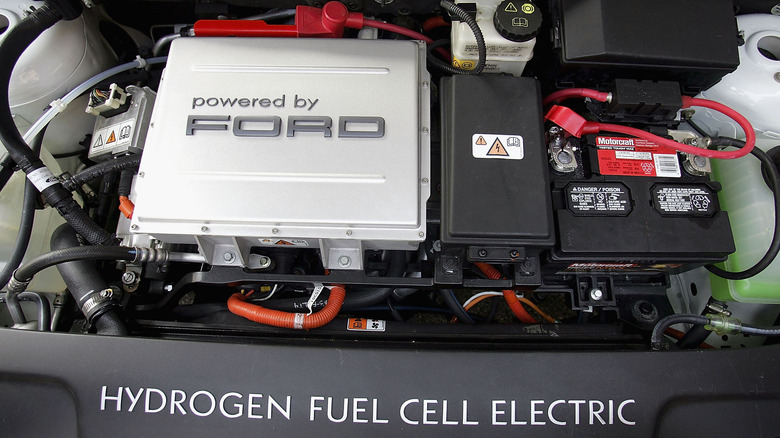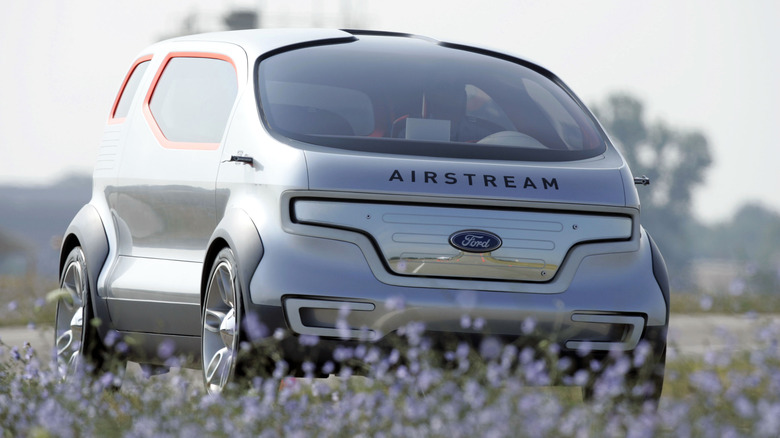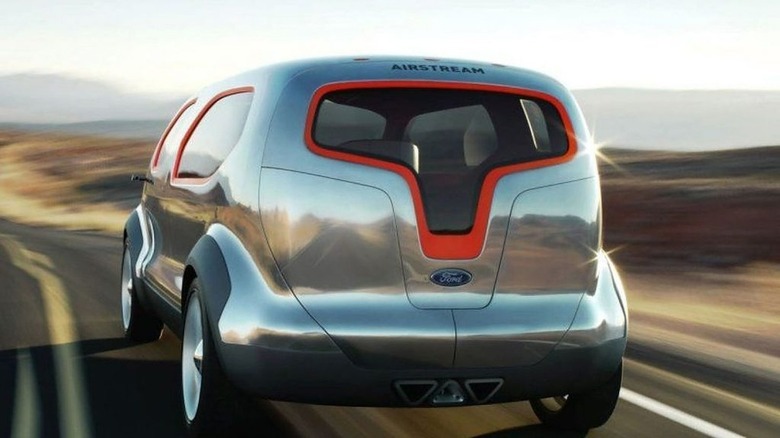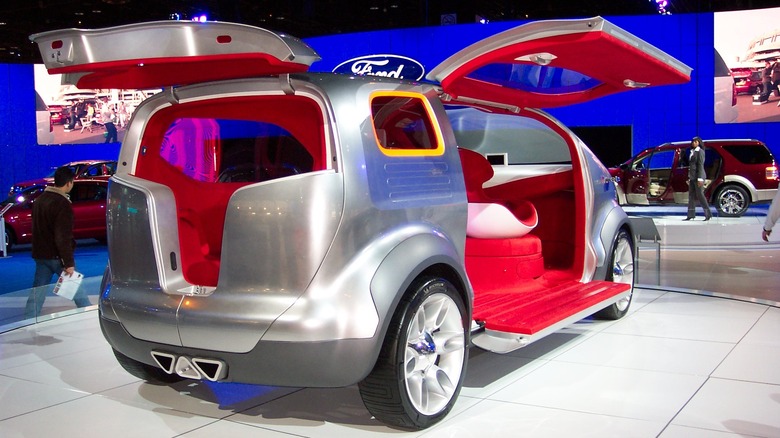The Futuristic Hydrogen-Powered Ford That Has Almost Been Forgotten
American legacy automaker Ford has crafted many exciting concept vehicles over its illustrious 119-year (and counting) history. Few are privy that Ford experimented with a rear-engined Mustang in 1967 called the Mustang Mach 2 Concept, a design-engineering study of a Ford-Cobra-style vehicle. It made us think about what could have been if the concept got the green light for production, considering the existing sixth-gen S550 Mustang is still riding on a front-engine architecture.
And then, we have the Ford GT90 concept, a mid-engine sports car designed after a modified Jaguar XJ220 chassis. The GT90 concept debuted at the 1995 Detroit Auto Show to much acclaim, and it's not hard to see why. It has a fighter-jet-style glass canopy and a quad-turbocharged 5.9-liter V12 engine with 720 horsepower, unfathomable numbers in the mid-90s. It also scoots like a rocketship, rushing from zero to 60 mph in 3.1 seconds and with a top speed of 235 mph.
However, the Ford Airstream Concept that debuted in 2007 made a more lasting impression. It first appeared at the 2007 Detroit Auto Show as a mashup between iconic camper maker Airstream and Ford. It's essentially an Airstream trailer with four wheels, but it hides some brilliance under its funky retro silhouette.
Ford Airstream Concept: Hydrogen for the masses
According to SAE International, Ford's Scientific Research Laboratory started work in late 1997 on developing a low-cost hydrogen-fueled engine. It led to the development of the Ford P2000 LSR in 1999, a "no-compromise" family sedan that achieves 60 mpg and could reach 420 miles on a single full tank of hydrogen. The engine is a 1.2-liter compression-ignition four-cylinder mill with direct injection that generates 74 horsepower (55 kW).
Moreover, Ford began production of hydrogen-fueled V10 internal combustion engines in 2006, about a year before the Ford Aistream Concept made its maiden appearance at the 2007 Detroit Auto Show. The V10 ICE mills feature 6.8 liters of displacement and forced induction via supercharging (per Green Car Congress) to pump out 235 horsepower and 310 lb-ft of torque. Ford also made the Tri-Flex Fuel Truck Concept that year, featuring the same 6.8-liter hydrogen-fueled and supercharged V10 engine that runs on hydrogen, gasoline, and E85 ethanol blend fuel.
The Ford Airstream Concept is not merely a showcase of the automaker's learnings in hydrogen fuel cell technology. It also previewed the imminent popularity of the crossover over a humble sedan.
Crossovers are the future
According to Ford's 2007 press release, the Airstream concept spoke "to the future of crossovers," a new market segment Ford expected to top 3 million units by 2010. "Crossovers are an increasingly important part of our business, and Ford is going to continue developing an expressive range of these vehicles," said Peter Horbury, executive design director of Ford (now vice-president of design at Geely Auto). Fifteen years on, crossovers now make up 24.1% of the U.S. passenger car market, making it the largest segment in the U.S. auto industry.
More than just predicting the future, the Ford Airstream Concept is a zero-emissions battery-electric car equipped with an innovative HySeries Drive plug-in hydrogen fuel cell powertrain (per Ford Authority). It could travel 25 miles in pure electric mode before the fuel cell woke up and recharged the concept's 336-volt lithium-ion battery pack. It could go 280 miles on a full tank of hydrogen, giving it a combined 305 miles of driving range.
Psychedelic styling
It's hard to deny that the Airstream Concept is also one of the most eye-catching Ford concept vehicles. It has an Airstream-like steel body covered in bespoke reflective paint to mimic the sheen of bare aluminum. It has asymmetric doors, including a roof-hinged power clamshell door on the passenger side and a liftback rear end. There are subtle shades of orange on the exterior that pay homage to Chuck Yeager's orange Bell X-1 (per Car and Driver), the first aircraft to break the sound barrier.
Inside, the Airstream Concept has a Lipstick Red and white interior that would make Austin Powers beam with pride. The pod-shaped front seats can swivel to face rearwards, while the lounge-like rear chairs are great for on-road parties, no less enhanced by a cylindrical LED screen that could project DVD movies (heard of those?) or virtual lighting effects.
So far, the premise of clean hydrogen technology is at a crossroads, but there is hope on the horizon. Ford filed new patents for a hydrogen-fueled internal combustion engine in March 2022, although it could take a while before the patent becomes a reality. Toyota is working on similar technology with Yamaha in developing a hydrogen-powered ICE V8 engine. We're hoping Ford will resurrect the Airstream Concept when the technology becomes viable very soon — not for the clean tech itself, but for how it evokes memories of a glorious and almost forgotten past.



